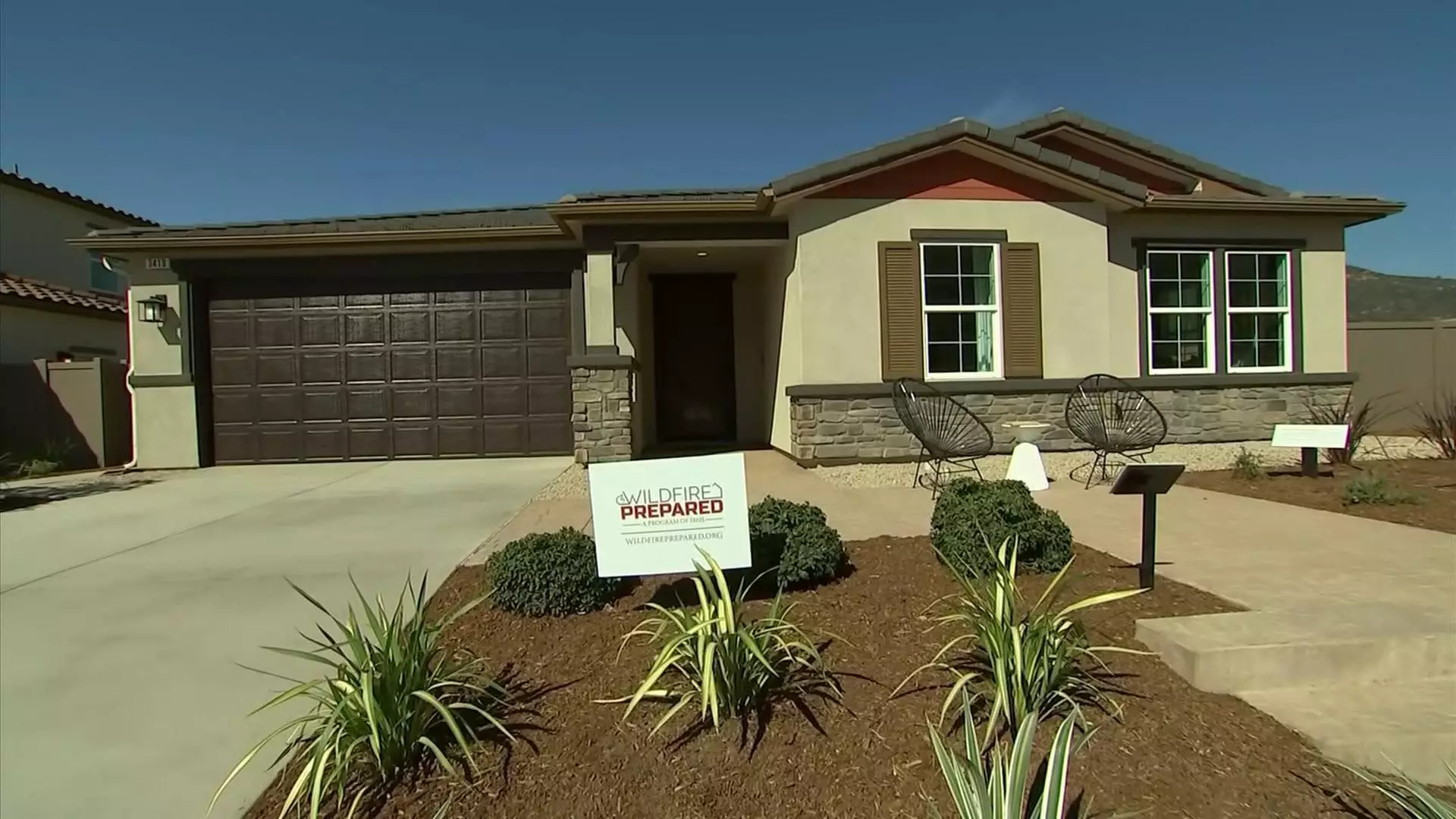As California grapples with the horrors of escalating wildfires, the unveiling of KB Home’s first “wildfire-resilient” community is nothing short of a beacon of hope in an otherwise bleak landscape. In response to the catastrophic fires that recently devastated thousands of homes in the Los Angeles area, this ambitious endeavor in Escondido, just a stone’s throw from San Diego, presents a novel approach to home construction. With 64 new single-family homes designed to withstand the brutal wrath of wildfires, KB Home is setting a new standard in residential safety and environmental adaptation.
This initiative takes on heightened importance as climate change amplifies fire risks across California, forcing both builders and homeowners to evaluate how to create livable spaces that are also defensible against nature’s fury. While many builders have dabbled in resilience on a small scale, KB Home claims the distinction of being the first major production builder to undertake such a significant project under specific wildfire resilience standards set forth by the Insurance Institute for Business & Home Safety (IBHS).
Redefining Standards with Innovative Design
Resilience in home construction has often been a scattered notion—rarely demonstrated on a large scale. However, KB Home aims to change that narrative by meticulously integrating fire-resistant materials and designs into their homes. The use of non-combustible siding, tempered-glass windows, and strategically designed landscaping is not mere compliance; it represents a shift in understanding what it means to build in a fire-prone area. The community features vital design elements such as covered gutters and enclosed eaves, all working together to create a safeguard against fire’s three primary threats—flying embers, flames, and radiant heat.
Transitioning from traditional building practices to these more secure methodologies poses significant challenges. Steve Ruffner, the regional general manager at KB Home, illustrated how quickly the company recalibrated its architectural plans upon realizing the potential of IBHS’s recommendations. This agile adaptation not only required changes in how homes look but also represents a philosophy shift in how we perceive safety in home construction within wildfire-prone areas. The efforts taken to adapt speak to a growing need for urgent responses to evolving climatic threats.
The Fine Line Between Cost and Safety
While the design innovations are commendable, the financial implications of building such “wildfire-resilient” homes cannot be ignored. With prices ranging from one million to several million dollars, questions arise about accessibility. KB Home’s vision to cater to first-time buyers and those looking to move-up is praiseworthy, yet the reality is that these homes may still remain outside the reach of many. What good is safety if it comes at a prohibitive cost for the very people who need it most?
KB Home’s commitment to affordability must be doubled down on if these homes are to be truly revolutionary. It’s crucial that upwards of 64 homes don’t become an elite refuge; rather, they should provide safe havens for a diverse socio-economic demographic—affirming that safety should not just be for the affluent but accessible to all.
Insurability as a Cornerstone of Resiliency
A critical aspect of KB Home’s initiative is the potential for improved insurability in a market where insurance companies are retreating. Insurers exiting the California market leave many homeowners not only vulnerable to financial crises due to rising premiums but also without coverage as wildfires become an enduring threat. In that regard, contrasting resilience with insurability creates a pivotal dialogue: Can we ensure safety in our homes, while also appealing to insurance companies longing for less risk?
Roy Wright, CEO of IBHS, highlighted the potential for these homes to foster a shift in insurability trends. The strategic architecture of the homes could serve as a model, igniting demand for fire-resistant designs that not only protect lives but also preserve property values. The community stands poised to be an exemplar, possibly influencing how insurers assess risk and adjust their policies across the state.
Testing the Waters: Future Vulnerabilities Remain
No project is without its risks, particularly when the looming specter of wildfire is involved. Even as KB Home pushes forward with their resilience-driven approach, the real challenge lies ahead—how will these homes fare when faced with the brute force of an actual wildfire? The homes’ thoughtful designs and innovations provide a strong defense but do not render them invincible. “Nothing is ever fireproof,” as Wright aptly noted, and homeowners will still need to be vigilant in maintaining defensible spaces around their properties.
Future success hinges not just on these homes’ construction but also on continuous education around landscaping practices and the communal responsibility of fire safety. The truth remains that the while these buildings may be a step forward, their real test will be in how they integrate into a broader culture of fire preparedness and community resilience. Ultimately, KB Home’s accomplishment represents optimism in an era of uncertainty, underscoring that even in the face of peril, innovation remains a powerful force for rebuilding and rethinking the future.

